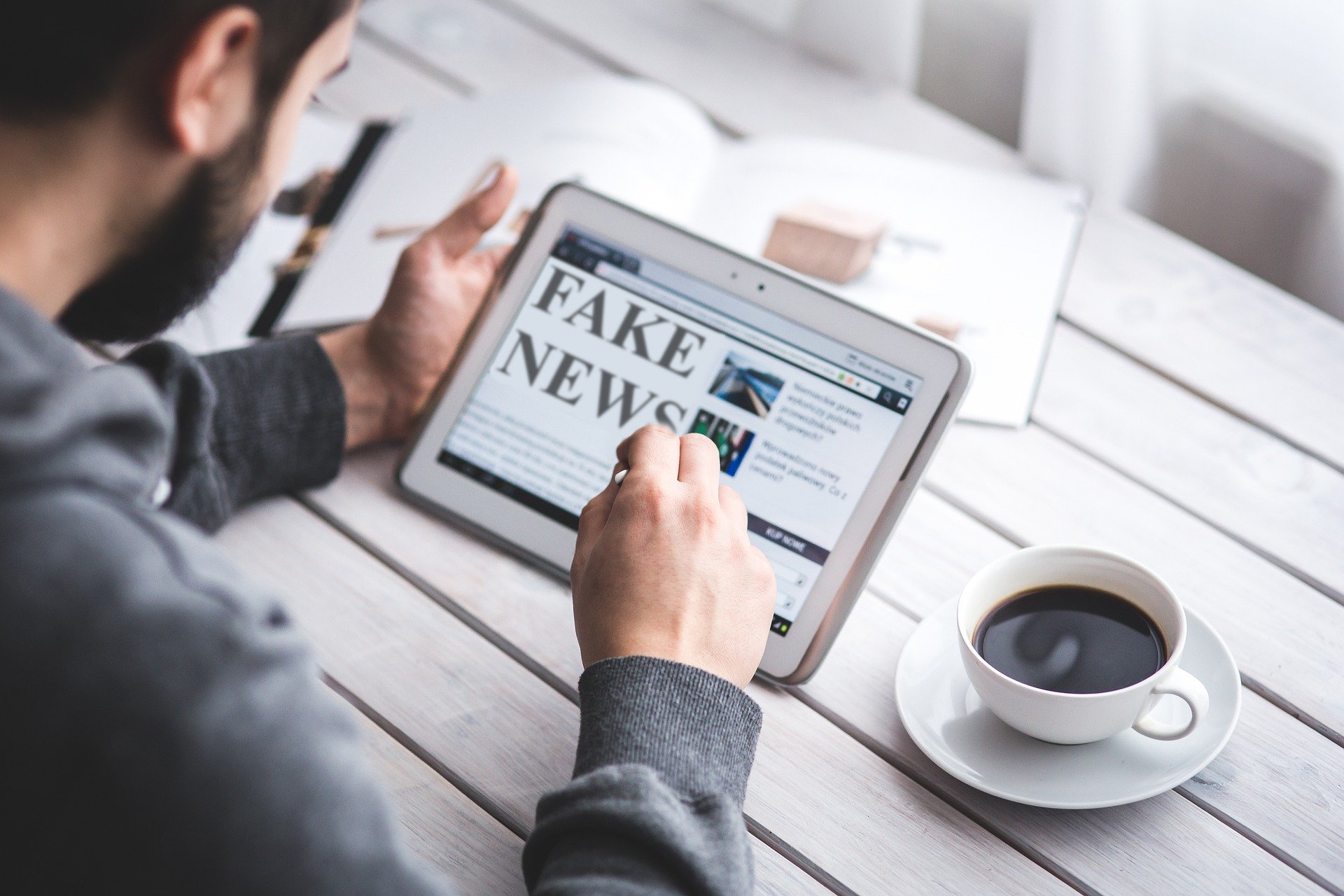Racist babies and worthless jobs – spotting the signs of misleading content online
Article by:Ryan Seller

Donald Trump is in the news again (shock). This time for tweeting something controversial (shock). It’s a fake video of a racist baby (sh…OK, actually this is bizarre, even for the President). If you can bear to put aside the misery of seeing yet another incident, for which there should have been damning questions asked and jobs lost, yet was simply swept into the ravening maw that is the Worst Year Ever, there are some things we can learn.
Firstly, the facts. Or what may be the facts. As we know by now, it’s hard to tell fact from fiction online. However. Seemingly, Mr Trump retweeted a video from one of his supporters showing a CNN broadcast of a toddler chasing another toddler down the street. CNN’s banner on the story declared that the chasing baby was ‘racist’ and ‘probably a Trump voter’. The video went on to show what really happened (the kids were friends all along) and called out the broadcaster for spreading fake news.
The issue, if you haven’t figured it out already, is that CNN never broadcast that video in the first place. It seems to have been completely fabricated by Trump’s fanbase as a piece of ‘evidence’ to undermine media reportage. Twitter itself added a label to Trump’s tweet saying ‘this is a pile of rubbish’, or ‘manipulated media’, or whatever it is they say when individuals tweet something so egregious that the normally hands-off platform actually has to spring into action.
There are already polemics on the not-new-at-all topic of ‘fake news’ – I can add little to the pile. But from a PR perspective, these are worrying times. It’s seemingly easier than ever for dubious claims or statistics to make it through the editorial net, while the important, hard-hitting stuff with a wealth of credibility behind it can struggle to stand out from the crowd.
Again, this issue isn’t exactly new. Look no further than shampoo adverts which claim that 87% of users love this particular brand. At the end of the ad you’ll see small print flash up saying something like ‘87% out of a survey of 14 users’. It’s a nonsense. And sample size is just one of the problems. If you’ve watched enough courtroom dramas, you’ll be familiar with the frosty reception given to ‘leading questions’ by the beak on the bench, or the impassioned objection lodged to them by the opposition’s lawyer. Unfortunately, they seem to be increasingly par for the course in surveys.
In the world of PR our roles are looking a little precarious. A recent survey commissioned by a newspaper in Singapore stated that only artists and telemarketers are less crucial to the good of the society right now, in the view of 1000 honest Singaporeans. Time to roll up our media lists and move on to pastures new? Not quite.
To the wider question of essential vs. non-essential work, the answer is simple. Of course, PR is non-essential right now. Most jobs are. As the survey made so abundantly clear, essential workers (while we deal with Covid-19 at least), are doctors, nurses, cleaners, delivery people, and all the others keeping society fit, well, and well-supplied. How do we know this? Common sense – not tweets. It’s the same common sense which tells us that there is intrinsic value to every role in less (and even amongst) hectic times, and the same common sense which long ago fled the scene on the Twitter feeds of certain orange individuals.
Ultimately, it is our responsibility as PR professionals to share the truth and offer information that is reliable and sourced correctly. We need to step up and call out phony statistics and polls geared at presenting information in a certain light and not honestly. While the likes of Donald Trump will continue sprouting nonsensical nonsense, common sense will prevail, whether he likes it or not.
Related Articles


